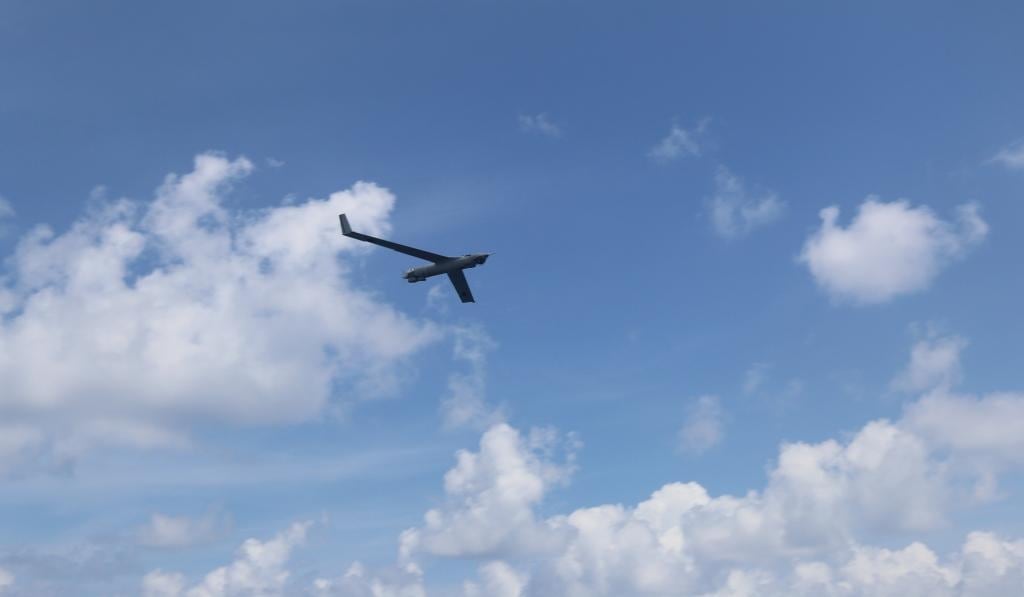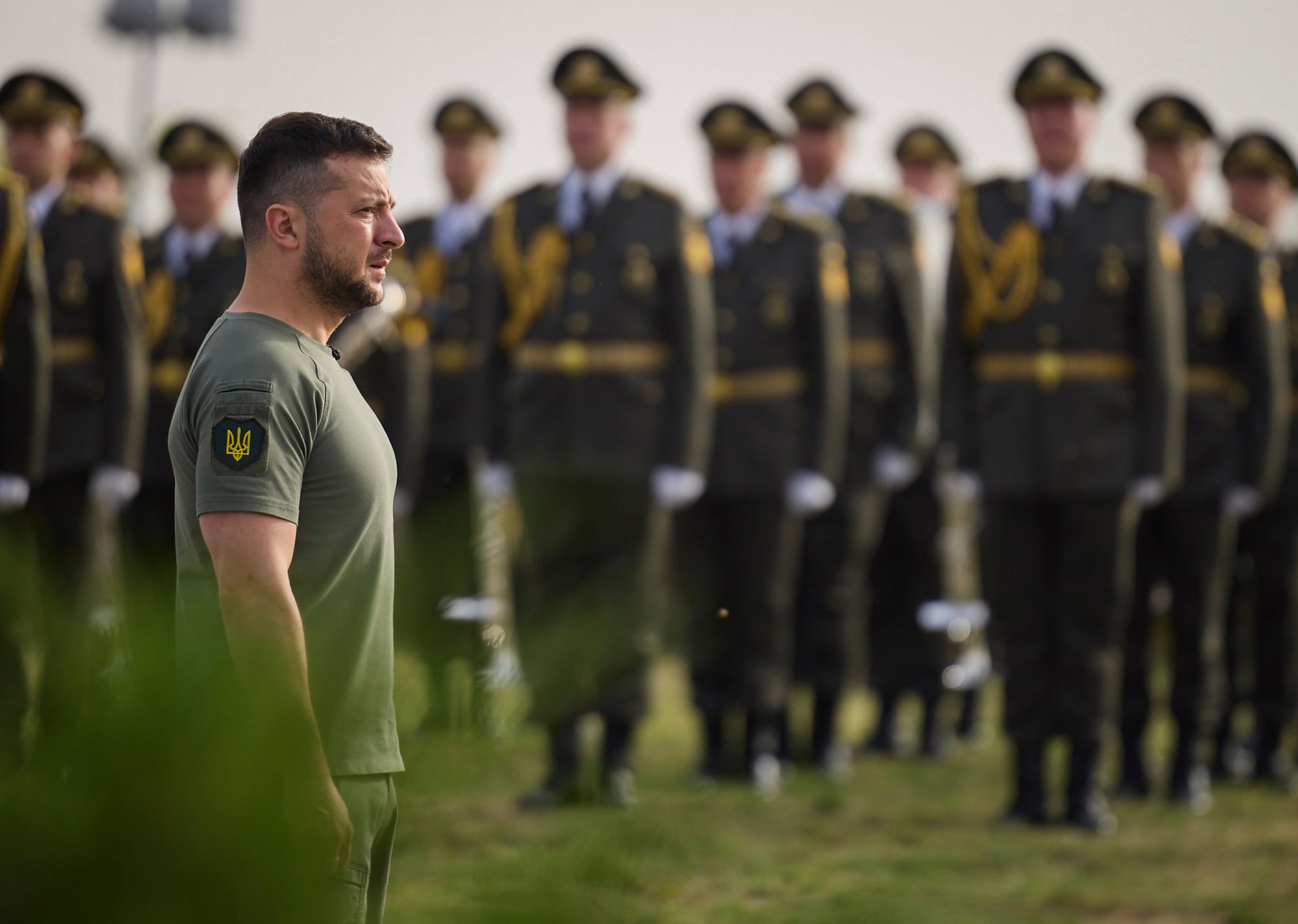As the 82nd Airborne Division and thousands of other U.S. troops rolled into Europe early this year, an Air Force unit quietly arrived behind the scenes in Germany.
The 505th Command and Control Wing at Hurlburt Field, Florida, is the only Air Force organization that takes a bird’s-eye view of how troops move around wartime airspace. In January, it brought that expertise to the 603rd Air Operations Center at Ramstein Air Base, Germany, to help direct the American response to Russia’s buildup of forces on its Ukrainian border.
Five airmen who led those operations described their work to Air Force Times ahead of the war’s six-month mark Wednesday.
“As we transitioned from steady-state [operations] to crisis, so did the problem set that we had to solve,” said Col. Adam Marshall, the center’s acting vice commander.
AOCs act as the nerve center of military air campaigns, helping to orchestrate when and where airmen go on missions and tracking an enemy’s airborne movements. Some experts have observed that Russia’s lack of a similar organization has contributed to its disjointed campaign.
But in late January, 505th Command and Control Wing commander Col. Trey Coleman said, it became apparent that Ramstein would need some help.
Air ops centers normally don’t have the staff to handle crisis-level planning, and Ramstein wanted backup to be able to meet the rapidly mounting needs of Europe at war, Coleman said. What’s more, the base was still recovering from several months spent supporting the U.S. withdrawal from Afghanistan and the subsequent humanitarian response.
RELATED

“The impending crisis between Ukraine and Russia required transition to 24-hour operations … which was not sustainable with permanently assigned personnel” at the air operations center and U.S. Air Forces in Europe headquarters, said USAFE strategy planner Lt. Col. Benjamin Lee.
Usually, the Ramstein air operations center, which serves USAFE and Air Forces Africa, can call on certain Air National Guard units for support: the New York Guard’s 152nd Air Operations Group and the Michigan Guard’s 217th Air Operations Group.
The Michiganders arrived to help coordinate air missions with U.S. Africa Command; the New Yorkers were tied up with another deployment.
Mobilizing other Guard units to work with USAFE would take too long, so the air operations center put out a call for active duty units with enough experience to assist. The 505th was a “natural match,” Marshall said.

Thirty-five active duty airmen — 12 officers and 23 enlisted — began heading overseas on Feb. 2. The war began three weeks later.
“The team working on the current operations floor ensured all aircraft, ground teams and leadership were notified when Russia launched its first offensive weapon,” the Air Force said in a press release in June.
A heavy workload
Russia’s aggression and eventual invasion of Ukraine added new complexities to the AOC’s typical work. On top of the U.S. Air Force’s usual air policing flights and routine training in Europe, airmen at the ops center had to juggle a higher volume of air and missile defense planning, flyovers to show America’s commitment to NATO countries, flights by nuclear attack-capable jets to keep Russian weapons at bay and more.
The AOC was most focused on keeping Russia from targeting a NATO ally, aiding NATO nations and the Ukrainians, and supporting the humanitarian aid response.
The planners also had to account for “agile combat employment” — less traditional operations that, while intended to keep Russia and others guessing about what NATO would do next, are more spontaneous and harder to manage.
In some cases, the AOC started from scratch when outlining new operations, from the equipment and people needed to when and how to carry out a mission. Those plans were approved by then-USAFE commander Gen. Jeffrey Harrigian.
Airmen “helped develop critical concepts of operations to bolster the U.S. contribution to NATO defense along the eastern front,” including spreading F-35A Lightning II fighter jets across Europe, according to the Air Force.
They also collaborated with NATO on a plan for communicating in European airspace, which lessened the chance of “tactical miscalculations,” the service said.
“We developed [operational concepts] for … air bases, forward-positioned air-policing fighters, and even to provide awareness and recovery options for senior leader engagements, to include [Defense Secretary Lloyd Austin and Secretary of State Antony Blinken] in Ukraine,” Lee added.
Many of the operational blueprints remain classified.
Testing out new tech
Several years into a push for more advanced military technology that comprehensively shows the state of play anywhere from the air to the cyber realm, the war in Ukraine is also giving airmen a real-world laboratory to test improvements to command and control.
They brought in several mission-planning tools developed by the Air Force’s Kessel Run software team, Marshall said. That piqued NATO’s interest in the same apps, and the alliance brought some of the tools into European ops units as well.
Many of those software apps help visualize what’s happening around a theater of war. That’s helped the coalition of troops from several countries remain on the same page, despite not always speaking English.
“Krados,” another recently introduced piece of software, helped create the master air attack plan each day.

“It was a useful way to visually depict asset allocation, but unfortunately it was not mature enough to produce an air tasking order,” Lee said.
NATO doesn’t have its own version of Krados, though, so the Americans have to use older, slower ways of sharing information.
A quick-reaction force?
Looking ahead, the 505th could turn into a quick-reaction force to support command-and-control hubs around the world.
The wing is discussing those possibilities with higher headquarters, Coleman said.
All AOCs, and the U.S. air components around the world more broadly, are understaffed. Trying to fully staff each of those organizations, from USAFE to Pacific Air Forces and others, can be “terribly inefficient” and misuse resources, he argued.
“Why not create a surge force that stays current in every theater … and can rapidly respond when needed?” Coleman said. “When this response force isn’t being used, they can conduct training.”
He believes that option could be a better way to wage war than training air components to handle more C2 operations themselves.
“The 505 CCW’s ability to rapidly surge operational planning expertise to a [theater] in need was identified multiple times as a key enabler to the success of USAFE in the initial stages of the conflict,” Lee agreed.
RELATED

But, he noted, those deployments can only be about 45 days long before the task of helping out an AOC starts interrupting training courses for new generations of command-and-control airmen. Technological advancements may be able to alleviate some of that pressure by automating certain tasks and sharing information more broadly.
In the meantime, the wing will incorporate its lessons learned into its training curriculum and its exercises at home, said Lt. Col. John Staudt, who served as the 505th’s train, advise and assist mission commander in Germany. The events of 2022 will shape an effort to overhaul most of those educational courses.
Still, Staff Sgt. Conner Kincaid, who supervised the tactical data links that share information across the battlefield while deployed to Germany, argues their training at Hurlburt has already been plenty useful.
“From my perspective, the main lesson learned from this deployment is that our in-garrison training at the 505th works,” he said.
Rachel Cohen is the editor of Air Force Times. She joined the publication as its senior reporter in March 2021. Her work has appeared in the Washington Post, the Frederick News-Post (Md.), Air and Space Forces Magazine, Inside Defense, Inside Health Policy and elsewhere.



